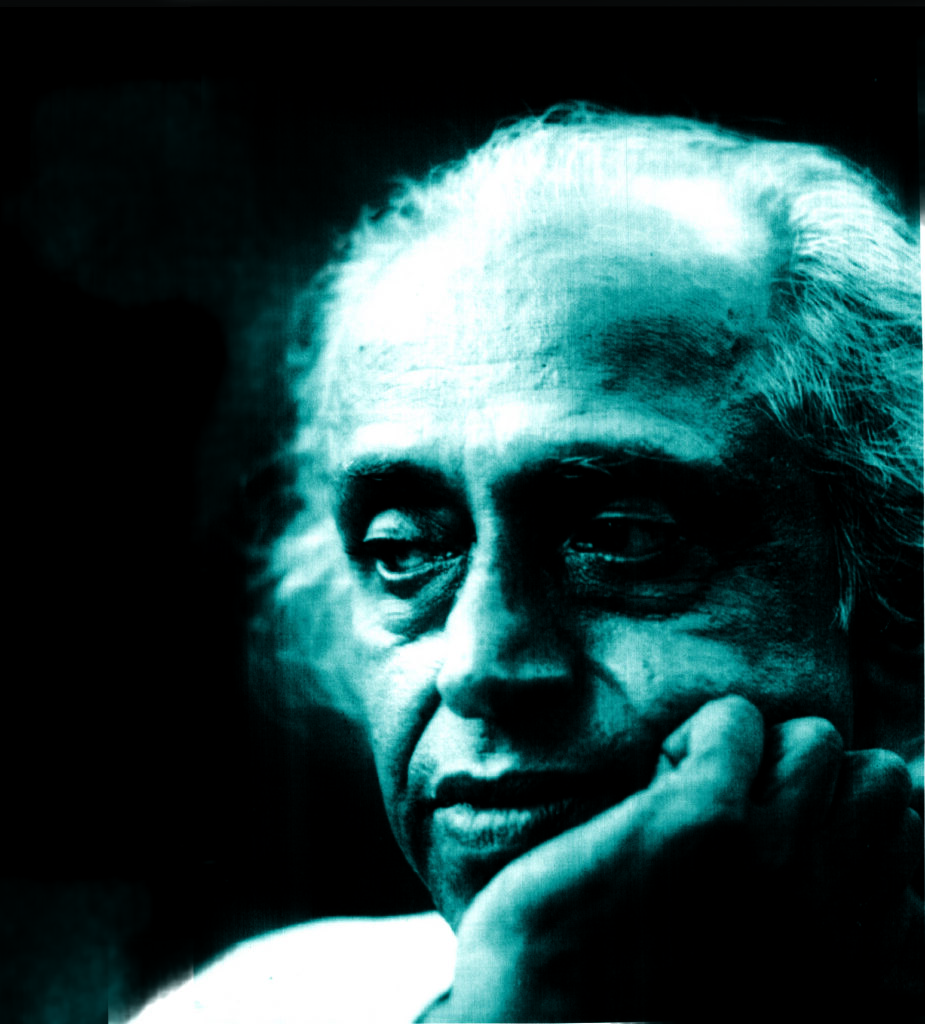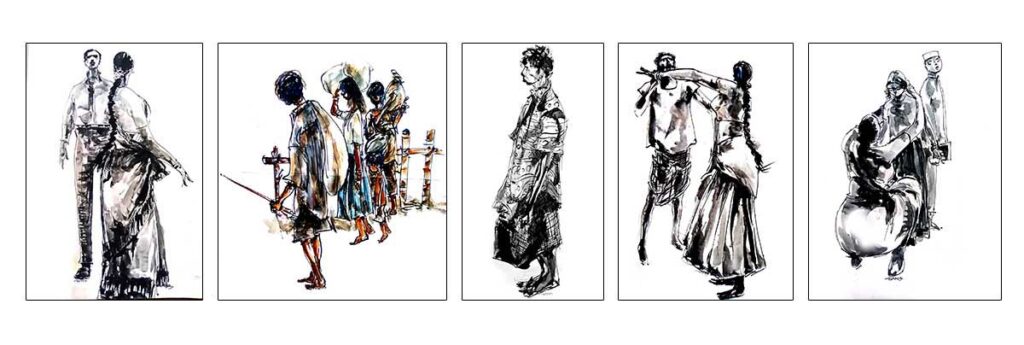M.N. Vijayan / Literary Critic

There are those who precisely know what to draw and there are others who let the medium dictate. In Japanese art, there is a saying that you either leave it upon the brush or the ink. An activist knows how to work the political arena. In writing, there is automatic writing. Write as it comes, it spills over and spreads. These situations arise with illustrations too. One of the strategies is to distort the form to effect a distinct dimension. Another involves applying shades to change the perspective. There are some whose attempts target breaking through the monotony of the image and add novelty.
Very much identical to developing a scene based on a play, illustration relies on the text. Based on a story or a novel, illustrations strive for a lesson. In one sense, illustrations develop out of observation of the universe, from gazing upon nature also known as universe. Likewise, illustration grows out of a story, which is a reading of the universe. Mundaserry master talks about two kinds of writing, one that draws upon the world and the other that relies on the book. In art history up until nineteenth century, all arts and literature relied heavily on books. This was not a short period of time. It is a similar story in this part of the world also. Although Ezhuthachan belonged to Tirur, he never saw it. One can perceive reality in literature or texts much the same as the reality in different geographies.

As the saying goes poetry should never be interpreted. The interpreting device for poetry is language. Annotation, commentary, elucidation etc. are ways of poetic interpretation. Similarly, the illustrator guides you on to a visual trajectory. There are arguments against this. Major misgiving being that it forces the reader to follow a channel that designs a specific thought map. Whatever it may be, an illustration should be viewed as an interpretation. An exercise akin to the interpretation of a literary work. An illustration therefore has to be understood as an interpretation of a poem or a story. The interpretation blocks the reader from entering the poem directly and charts a different path altogether. Illustration does the same. Like elucidation of the word is the elucidation of the image. Visual interpretation and visual documentation. Though, over time, faces have taken precedence over events, it is striking how illustrations help connoisseurs to ease their way into the text. However, the fault lies in its restrictive grip on thinking beyond the box. It has been observed that Vedas became disagreeable owing to its interpretation attributed to Sayanan. If we assume that Sayana’s interpretation adversely affected Vedas, it goes without saying that it in turn did great damage to the Indian people. So, for better or worse, interpretations merit our alert engagement.
Illustration is comparable to a research exercise. When the author only needs to adorn Arjuna with a crown, the illustrator has to overcome the hurdle of figuring out the type of crown on Arjuna. In the visual sphere, reality requires hard work. The visual image makes a stronger impression on the mind than the auditory. When ‘Africa’ first appeared in print, it was accompanied by Devan’s illustration that showed an image of Africa in chains and a continent emerging out of it. This was like any illustration. But a poetic illustration at the same time. Even when it instructs the reader to read the poem, it holds forth on its own terms. The illustrations for Basheer’s characters are of the same ilk.

The images that accompanied Tamil writer Kalki’s works have spurred major changes in our illustrative art. Think of Namboothiri’s visual interpretation for ‘Randamoozham’. The visuals for Kalki’s works belong to the same genus. The strokes present us with life, a select episode from a story. There are some similarities that he shares with A.S., yet Chandrashekharan’s works are original and very profound.
Chandrashekharan’s strokes are bold and sure. Like a writer who’s never at a loss of words, Chandrashekharan’s brush does not hesitate. His specialty owes it to the depth of his personal style combined with the versatile nature of classical technique. This is both authoritative and independent at the same time. In the realm of commentary, it is common to underscore for emphasis. Chandraskeharan’s strokes pack emphasis. A committed painter knows how to emphasize and draw even when treading on a thin line. He knows exactly what ought to be drawn. The ability to discern river from canal is of consequence.

Chandraskeharan’s illustrations are closer to the classical realist tradition and distant from the romantic style. It is virtually consummate in that his strokes underscore human anatomy. As with A.S., Chandraskharan falls in that artists’ lineage of mastering the human anatomy first only to distort it later. He has several such distorted works to his credit. His oeuvre also includes works that are proportional and lifelike. However, there is none that attempts to force a meaning with two three stokes. Since he exercises such control over his medium and knows exactly what to draw, his people and manner not only go beyond the strictures of the brush or surface but they are also full of authenticity. One can directly experience this truth in one of his heads with oversized eyes or in another one of his lifeless bodies or in those ornate figures and settings. Irrespective of whether he was drawing van Gogh or V.K.N., Chandrashekharan focused on reality.

It is indeed an intrinsic feature of art history to have art forms relegated to indifference during the early stages only to attract recognition with the passage of time. Though a certain historical context in film privileged the director, awards have evolved to recognize contributions by actor, actress, story, sound design and even editing for that matter and much the same way there is wider recognition today of illustration as an exclusive form like its counterparts in oil painting and sculpture. This is a historical process. That people turned up to see Namboothiri’s illustrations when they were exhibited in Kottayam, even eclipsing the turnout for Ravi Varma paintings, was based on a shared recognition of artistic truth intrinsic to illustration art. An exhibition of magazine illustration was also one that surprised Kerala. It has now come to exist independently from being a postscript to the story. Lay out too has become an art form by itself. Lay out was there forever. The discovery of art forms independent of each other is a historic phenomenon. One does not dabble in illustration art thinking that it would become museum piece or exhibition art one day. He was only drawing for the story that was sent over. When working on a shirt, a tailor typically wouldn’t imagine that he is practicing an art form or that there would be an internationally renowned designer somewhere. Likewise with cuisine. In truth, the title of an artist arises out of a certain historical juncture and shaped by specific social conditions. It when the time is ripe may acquire such depth of meaning and place in the society that was virtually absent in the beginning of drawing.

In olden times, remnants of stories were sculpted on to the walls. Those drawings in Ajanta have become a shrine for Indian art. These possibilities were unanticipated at the time of drawing. It was only one of the many ways to spread Buddhist scriptures. The art form grows and gains independent status at a supple historical moment. We are witnessing cartoon compilations turning best sellers. Like how photographic instincts have moved from passport size image to exhibition sensibility, compilations of illustrations enjoying reasonable print run is not very far. And there will be discussions on them. In fact, that moment is already here. And, we, who are always late to see things clearly will finally realize that illustration is a sublime art. This too is a historical change.
DESHABHIMANI WEEKLY (India)